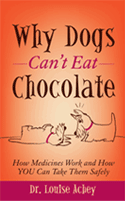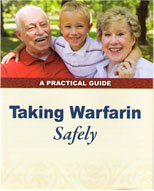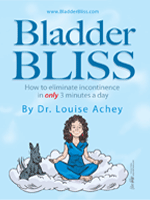Archive for September, 2016
September 26th, 2016. Filed Under:
Caffeine,
consumer information,
Medicine dangers,
medicine safety,
medicines,
patient information,
side effects.
Tags:
5-Hour Energy,
coffee,
Four Loko,
Joose,
kola,
mate,
Red BullEvery morning at 6am Pacific Standard Time you’ll find me in my kitchen in front of a silver machine concocting a cup of jump-start for my day. My well-used Gaggia Classic espresso machine relieves my caffeine deprivation every morning with an aromatic, high-octane blend of caffeine, water and milk. As I write this my 16-ounce unflavored latte steams by my right elbow.
I’m not alone when performing this ritual of drinking coffee before engaging my brain. 100 million Americans are also daily coffee drinkers and 60% of us consider coffee a mandatory part of our morning routine. There’s even a National Coffee Month each August to celebrate our addiction.
Although Americans purchase a large proportion of the world’s supply of coffee beans and are the home of Starbucks®, Seattle’s Best® and Dunkin’ Donuts®, we aren’t the world’s most dedicated coffee drinkers. In fact, we only rank 25th in per capita coffee consumption, out-caffeinated by the Top 5: Finland, Norway, Iceland, Denmark and the Netherlands.
Coffee is a definitely a worldwide beverage. Green, or unroasted coffee beans are the second most traded and valued commodity in the world, behind only crude oil. We call coffee “Java” because when coffee as a beverage first became popular in the 19th century the highest quality of beans came from the Philippine island of Java.
Why do we love coffee so much? Probably because it naturally contains caffeine, the most widely consumed stimulant in the world. Found in over 60 different plants, caffeine’s effect on the brain can be detected in amounts as low as 10mg, a fraction of the 100mg dose found in an average 8-ounce cup of brewed coffee.
As the most common psychoactive compound ingested in the world, caffeine is found in beverages all around the globe: coffee, tea, a South American drink called mate, and kola nut. Kola nut extract was originally added to carbonated beverages to flavor them, although today soda manufacturers use synthetic sources of flavoring and caffeine in their cola flavored products.
Enterprising entrepreneurs have added caffeine to other things besides soda. Need the pick-me-up quality of caffeine but don’t want coffee breath? Try one of the popular energy drinks like Red Bull® or 5-Hour Energy®. There’s even Stay Alert® chewing gum with 100mg of caffeine per stick, about the same amount found in a good ol’ cup of java. Not interested in drinking a beverage to get your day going? Wired Waffles® brings you 200mg of caffeine per waffle to jump-start your day or you can use their caffeinated pancake syrup.
If the thought of putting caffeine into foods bothers you, welcome to the club. The Food and Drug Administration (FDA) has concerns about the amount of caffeine in foods, particularly since waffles, pancake syrup, gum and candy are attractive to children.
As I sip my morning coffee, I wonder, “Should caffeine be allowed to be added to foods that don’t naturally contain it? Should we let other products besides our traditional beverages provide us with caffeine?”
One consideration is the fact that we vary in our sensitivity to caffeine’s side effects. Some of us can drink a pot of coffee and go right to sleep while others experience side effects like heart palpitations, tremor, anxiety and insomnia after only one cup. Some heart patients are advised to avoid caffeine completely because of the risk of increased blood pressure and heart rate.
The currently recommended limits of caffeine intake are 300-400mg per day in adults and 100mg daily in teens and young adults. The FDA is concerned about whether to approve food products containing caffeine as an additive because little is known about the effects of caffeine in small children, young adults, or in pregnancy.
In 2010 the FDA forced the withdrawal of caffeinated alcoholic beverages like Joose® and Four Loko® because of studies indicating that combined ingestion of caffeine and alcohol could lead to life-threatening situations. The FDA determined that caffeine consumption masks the sensory cues people use to track their level of alcohol intoxication. Young adults drinking the alcohol/caffeine combinations found in products like Four Loko® continued drinking well beyond what they usually drank with blood alcohol levels 2-3 times higher than those drinking beverages containing only alcohol.
You can find more information about caffeine in foods and other interesting topics on the FDA website under Consumer Updates: www.fda.gov/ForConsumers. Just don’t ask me any tough questions before I have my morning cup of Joe…
Leave a Comment
September 19th, 2016. Filed Under:
consumer information,
Medicine,
Medicine dangers,
medicine safety,
medicines,
Pain,
patient information,
side effects.
Tags:
acetaminophen,
analgesics,
anti-inflammatory,
ibuprofen,
naproxen,
non-prescription,
NSAID,
Tylenol®Q: There are so many choices out there for aches and pains. Which medicine is best for me?
When you have mild to moderate pain like a headache, sore muscles or aching joints there are 4 pain medicines you can buy without a prescription: aspirin, acetaminophen (Tylenol®), ibuprofen (Advil®), and naproxen (Aleve®). Which one should pick?
Aspirin is the oldest of these four options and is available in two strengths: low dose or “baby” aspirin which are 81mg each and the adult dose of 325mg, which is exactly 4 times the 81mg dose. Many Americans take one aspirin a day to prevent heart problems because of how it works as a blood thinner. If you take any prescription blood thinner medicine like Plavix®, warfarin (Coumadin®), or one of the newer ones advertised on the television, don’t take more aspirin for relief of your headache pain. Since aspirin can upset your stomach it’s best to take it with food or a full glass of water.
Whether sold as Tylenol® or by its generic name acetaminophen, Tylenol® is the most popular and common painkiller sold in America. Although it is safe enough for kids to take, Tylenol® has a dark side: taking too much acetaminophen is deadly to your liver. Being available in over 200 different non-prescription products the popularity of acetaminophen makes it dangerous because its so easy to get too much.
If you take a prescription pain medicine you may already be getting acetaminophen. Look for the abbreviations APAP or ACET on the prescription label, or ask your pharmacist. If you have liver disease, don’t take Tylenol® until you talk to your doctor about whether taking it is safe for you and how much you can safely take for pain.
The other two pain relievers available without a prescription are closely related to each other and also to aspirin. Ibuprofen and naproxen were originally only given as prescription medicines, but now they are available in non-prescription products in addition to their stronger prescription doses. Aspirin, naproxen and ibuprofen relieve muscle aches and swelling better than acetaminophen and belong to a group of medicines called NSAIDs, or non-steroidal anti-inflammatory drugs.
When taking ibuprofen, also known as Advil® or Motrin-IB®, or its close cousin, naproxen, sold as Aleve® be careful to take it with food to avoid stomach pain and bleeding. NSAID medicines can also damage your kidneys, especially if you have kidney problems or take it when you are dehydrated.
Taking too much of an NSAID is particularly dangerous because it can cause stomach bleeding and kidney failure. In addition to the non-prescription NSAID remedies there are several prescription NSAIDs commonly prescribed. Ask your pharmacist if you are already taking a prescription-strength NSAID and if you are, avoid taking the non-prescription versions.
7 Tips for Taking OTC (over-the-counter) Pain Relievers Safely:
- For aching muscles and swelling, ibuprofen or naproxen usually works better than acetaminophen. Some people get more relief with one or the other. Ask your pharmacist before taking ibuprofen or naproxen to make sure that you’re not already getting a prescription product doing the same thing.
- Avoid taking an NSAID if you already take a blood thinner. Taking 81mg of aspirin daily is ok, though. Ask your pharmacist if you aren’t sure if you are on a blood thinner medicine.
- Watch out for taking too much Tylenol®. Healthy adults can take up to 4 grams per day, or the equivalent of 8 tablets of extra-strength acetaminophen. Older adults are should limit their Tylenol® use to 3.1 grams daily, or 6 tablets of extra-strength Tylenol®. If you take a prescription pain reliever ask your pharmacist to find out if it has acetaminophen in it, and how much.
- If you take aspirin daily for your heart, talk to your doctor o pharmacist before taking it for pain relief. It’s safer to take Tylenol® or another NSAID like naproxen instead.
- You can take both acetaminophen and an NSAID for pain at the same time, as long as you don’t take more than is safe for you. Your pharmacist is a medication expert and can advise you as to which one is best for you.
- If you have kidney disease avoid taking ibuprofen or naproxen for mild to moderate pain, and make sure that you stay well hydrated when taking either one.
- If you have liver disease, ALWAYS check with your doctor before taking Tylenol® or acetaminophen.
Leave a Comment
Q: My 89 yr. old mother is taking Cipro® 2x/day for 10 days. She is complaining that nothing tastes “right”. She says everything tastes sour. Is it the Cipro®?
Yes, I believe so. She should be able to taste her food again a few days after she completes the course. It’s because there are small amounts of the antibiotic actually in her saliva, which she can taste.
Q: I am taking Bactrim®, Cipro® and Xarelto®. Have been on antibiotics for 7 months due to staph from spider bite. Everything from sweet to salty and drinks all taste the same. Like bitter or no flavor at all. Did the medicine cause this and can I do anything about it?
Antibiotics are the most likely culprits. Both Bactrim® and Cipro® can cause taste changes. It’s possible that Xarelto® can as well, although we don’t have as much experience with it as the older medicines you are taking. When did the taste change happen? Did you start any new medicines within 2-3 weeks of noticing that effect? Please work with your doctor on solving this; don’t just quit taking your medicine on your own.
Q: I am taking Eliquis®, losartan, Plavix® and Crestor®. Lately I can’t find a coffee that doesn’t taste tinny or metallic. I am wondering which med is the culprit?
Any of those medicines COULD be the culprit. The best way to narrow it down is starting with the time relationship: When did you notice your coffee was tasting metallic? Which of those medicines was started within the last 2-3 weeks prior to that? If you started taking more than one medicine during that time, you may need to stop one medicine at a time to determine which is the culprit. Please work with your physician on this issue. If you miss even one dose of Eliquis® you are unprotected from a stroke or other blood clot.
Leave a Comment
Q: My toenails are getting really thick and yellow. Are there any non-prescription products that can help?
When you have thickened, deformed toenails it’s not just how nasty they look but how they can cut through your socks, cause pain and prevent you from wearing your favorite shoes. All this misery, just from a fungal infection! Fungus that infects your feet through cracks in your skin, then spreading to the cells under your skin where your body forms new toenails, called the nail plate. Once the fungus invades your nail plate your nails start growing out ugly and deformed.
Fungus infection of the toenails, called onychomycosis often starts with one nail affected, usually with little white spots. As it spreads the entire nail becomes white and it spreads to other nails, eventually causing more severe symptoms, like nails growing out thickened, yellow, discolored, even crumbly. As your toenails grow thicker it’s harder to keep them trimmed, and nails that grow sideways or slant upward wear holes in your socks and make it hard to find shoes that fit.
Treating onychomycosis is often lengthy, frustrating and disappointing. The prescription treatment considered the most effective only cures the infection in 50% of cases. Not only that, but 1 out of every 5 people who do get cured will have a recurrence within 2 years.
Infected toenails take 12 months to grow out, so any successful treatment of onychomycosis takes a long, long time: a minimum of 3 months for oral treatment and 10-12 months for topical treatment. Topical treatments designed for athlete’s foot are not usually effective on toenail fungus because they only have to affect the skin. When treating a toenail infection you need the treatment to penetrate under the skin and to attack the fungus growing inside the nail plate.
What can you do?
Topical treatments are most successful in mild cases, such as only part of the nail on only 1-2 toes affected. If you have significant thickening and deformed nails, consider prescription strength antifungals. Sometimes the best way to treat severely deformed toenails is to remove them and let them grow back in while you are treating the infection with an oral antifungal like Lamisil® (terbinafine) for 12 weeks.
There are topical treatments for less severe cases of onychomycosis, but they have far less success than a prescription strength oral antifungal and they all need to be used consistently every day for at least 10 months. Filing off some of the nail may also help topical treatments penetrate better into the nail plate.
Some examples of topical remedies for nail fungus include prescription-only Jublia®, non-prescription tolnaftate solution, tea tree oil, and (believe it or not) Vick’s VapoRub®. Another option recommended by some of my fellow pharmacists is soaking your feet daily in full-strength white vinegar for at least 4-6 months.
Even when the fungus has been killed off, don’t be shocked if it comes back. That’s because the conditions that helped the fungus get a toehold on you are often still there: warmth, moisture and darkness.
Here are 5 tips For Fixing Nail Fungus:
1. Get rid of athlete’s foot by treating it with topical creams or gels that kill off foot fungus. If you don’t eradicate the fungus from your skin, it will re-infect your toenails. Once your skin symptoms have disappeared keep on using the medication twice a day for at least another two weeks. This helps make sure the fungus gets completely shed out of your skin. If you leave any tinea fungus alive inside the skin layers of your feet it can easily multiply and spread, putting you right back where you started.
2. Keep your feet as dry as possible. Wear loose shoes or sandals and change your socks frequently. Fungus thrives in warm, dark and moist places; your chances of beating the odds and getting a cure as well as avoiding recurrence are greater if you make it as difficult as possible for the fungus to multiply.
3. When using a topical remedy, filing off some of the toenail on top seems to improve your changes for success.
4. Apply the nail fungus remedy to the affected nails every day for a minimum of 10 months. If your symptoms don’t completely resolve or they become worse you should consult your doctor for other options. Sometimes removing the nail is the best option.
5. Try daily vinegar soaks. Soaking your feet in full strength white vinegar every day for at least 6-10 months is an inexpensive option you can try.
Leave a Comment



